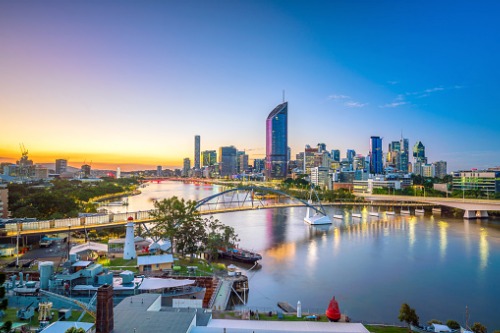

Vacancy rates in Brisbane have broken a decade long record, according to SQM Research. The news comes as vacancy rates in Melbourne and Sydney trend in the opposite direction, with the Victorian capital in particular showing twice as many vacant rental properties as last year.
Brisbane finds itself with just 1.5% of properties on the rental market unoccupied, marking a significant supply problem for that market. Dr Diaswati Mardiasmo, Chief Economist at Queensland-based real estate firm PRD, said that it was partly due to the pandemic and partly due to pre-existing factors that had seen Australia’s biggest two cities struggle.
“The only places that aren't having fun with vacancy rates are Sydney and Melbourne, where they're going up,” said Dr Mardiasmo. “Regardless of whether you look for a one year, five year or 10-year perspective, they're going up.”
“We can't blame them, because they are the cities that have suffered the most in terms of lockdowns. They’ve lost internationally open economies, student and business travellers, import/export, everything. Compared to Perth, Canberra or Brisbane, they're much more open. In some ways, it's ironic that the two big cities that have done best in terms of economic activity and house prices are the ones that are hit hardest when it comes to vacancies.”
“The Real Estate Agency of Australia (REAA) puts a healthy benchmark of 3% for vacancy rates, which is considered the natural state where supply and demand are balance. Sydney is 3.3%, which for what they've gone through, is not much above the benchmark. Melbourne is higher, but they've gone through a lot too and I don't see it as a catastrophe. History tells you that they're usually lower than the benchmark, so this is an extraordinary event.”
While COVID was an obvious shock to rental markets, it was just the most recent part of a wider trend that has seen vacancy rates rise in Sydney and Melbourne.
“The jump pre-COVID was because of people leaving the cities due to lack of affordability,” said Dr Mardiasmo. “There was also a migration of people outside of Sydney, particularly to Brisbane and the Gold Coast. At the same time, this was when quite a few developments hit the Sydney market, so there was a little more supply. As a result of what happened between 2015 and 2017, the government approved a lot of development. That altered the supply and demand, which altered the vacancy rates. And then COVID hit, which sent it up further.”
The data reported in SQM’s research puts Australian cities in an unusual position, where some markets are over-saturated by supply, and others by demand.
“In a lot of ways, it's a double-edged sword,” explains Dr Mardiasmo. “Sydney and Melbourne have had that much development that they have to consider how to get their vacancy rates down, whereas in other capital cities, because they didn't do a lot of development prior, there are now so many rents who can't find a place to rent. There's no immediate supply. Everyday you hear about people apply for 10 or 20 rentals and not getting anything. You hear that the market is so hot right now that you have to sign papers when you come to the open house because there's 20, 30, 40 people inspecting the same property.”
